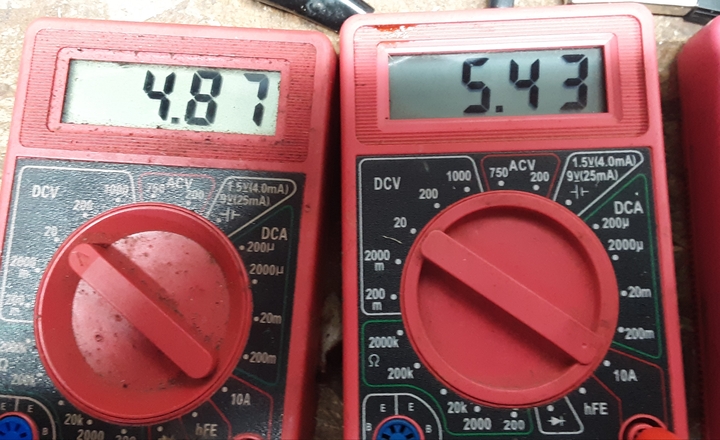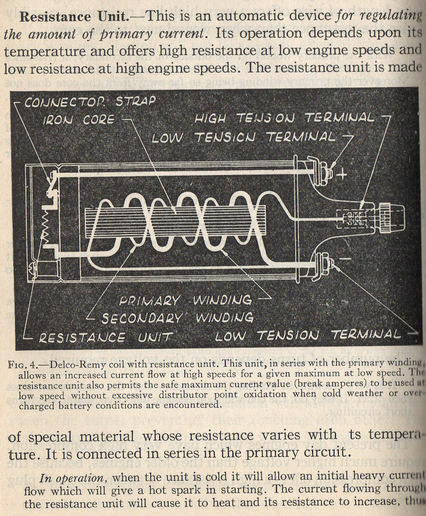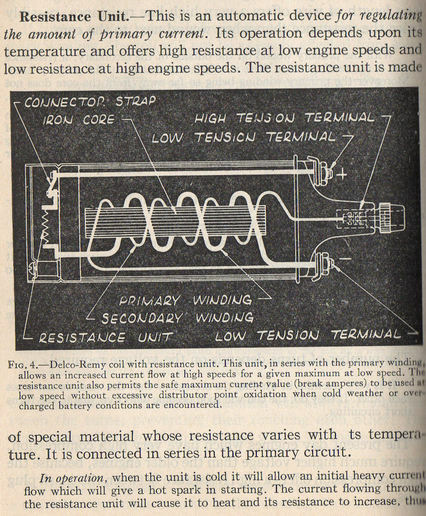Mornin good neighbor YET ANOTHER SIMPLE BALLAST AND OHMS LAW QUESTION I SEE ????? Will this one yield an entire page of discussion like the other ??????? Fun, so very simple (how can something so simple R = V/I be soooooooo confusing????) yet still an interesting question. You did good George I hope this answers and settles all your concerns
Thanks for the vote of confidence Georger, AND AS YOU ALREADY KNOW YOU ARE CORRECT WHEN YOU STATE
All you need to calculate ohms is the volts across the resistor and the current through the resistor. JohnT our EE can confirm this
Iffffffffffff the meters are accurate ?? Yes YOU ARE CORRECT R = V/I = 4.87/5.43 = 0.896 Ohms
You further ask ????????? Is this a 1.5 ohm resistor?? The simple accurate answer ifffffffffffffffff the meters are accurate is a definite NOOOOOOOOOOOOOOOOOOOO, as 4.87/5.43 only equals 0.896 Ohms !!!!
NOTICE TO ALL:
DEFINITION: A thermistor is a type of resistor whose resistance is strongly dependent on temperature, more so than in standard resistors
There seems to be some confusion below in how old car coils with true actual internal THERMISTORS functioned VERSUS old tractor coils that used 6 volt coils on 12 volt tractors which, therefore, required a voltage dropping (12 down to 6) ballast RESISTOR NOTE I said RESISTOR NOTTTTTTTTTTTTT THERMISTOR
Those old car coils with internal THERMISTORS were NOT used to drop 12 battery volts down to 6 for 6 volt coils on 12 volt autos, the THERMISTORS were lower resistance when cold (for better starting spark energy PLUS different engine RPM as the picture explains) PLUS but higher resistance after warm up THATS NOTTTTTTTTTTT THE SAME FOR MODERN BALLAST RESISTORS (they are NOT Thermistors) They can be equipped with a ballast by pass when starting to improve cold weather starting but the external ballast resistors (drop 12 to 6) ARE NOT THERMISTORS
Before anyone has a calf or sets their hair on fire YESSSSSSSS I know resistance changes with temperature but what Im telling you is modern voltage dropping ballast resistors like old tractors use ARE NOT THERMISTORS that serve the purpose of old car coils (temp compensation and RPM effects). If they are 1.5 Ohms they stay fairly close to 1.5 from cold to hot UNLIKE old car coils with internal temp compensating THERMISTORS
On a 12 volt tractor you can use EITHER a full true 12 volt rated coil (around 3 ohms, some 2.5 to under 4) orrrrrrrrrrrrrr a 6 Volt rated coil (around 1.5 or so Ohms). They limit coil current to around 4 amps so points dont burn up quick For 12 volts if you had a 50 50 voltage divider to drop 6 across ballast and 6 coil if the coil were 1.5 ohms the ballast would be the same 1.5 Ohms. I (past used tractor dealer and farmer) have seen ballast in the 1.3 to 1.8 or so ohms range again they are NOT nor used like old car coil temp compensating THERMISTORS
There ya go George, if you want to use a full true 12 volt rated coil fine or if you want a 6 volt coil PLUS an external voltage dropping (12 to 6) RESISTOR fine, dont let anyone talk you out of it its YOUR choice.
THERMISTOR (old car coils) IS NOTTTTTTTTTTTTTTTT SAME AS AN OLD TRACTOR BALLAST RESISTOR
DISCLAIMER I believe all the above to be true but NOOOOOOOOOOOO warranty. Everyone is entitled to THEIR opinion this is mine and I hope this helps explain the difference in old car coil internal THERMISTORS versus the 1.5 Ohms Ballast RESISTORS like George asked about. They are NOT the same they serve different purposes
YES unless Ohms law changed, V = R I R = V/I 4.87/5.43 = 0.896 Ohms
NOOOOOOOOO warranty but I believe this is accurate regarding old car THERMISTOR equipped internal and old tractor external Ballast (drop 12 to 6 volts) RESISTORS
Best wishes to all and to all I wish you and yours a very Merry CHRISTmas
John T At a Cracker Barrell north of Dade City Florida








